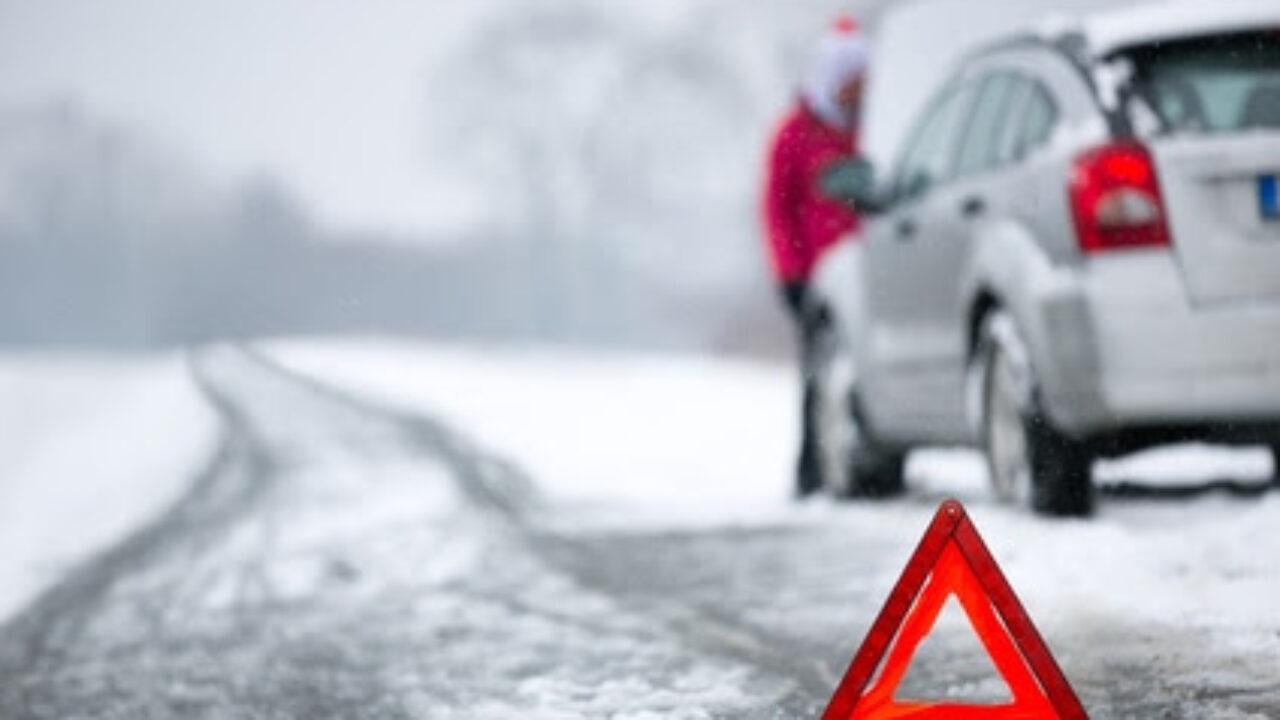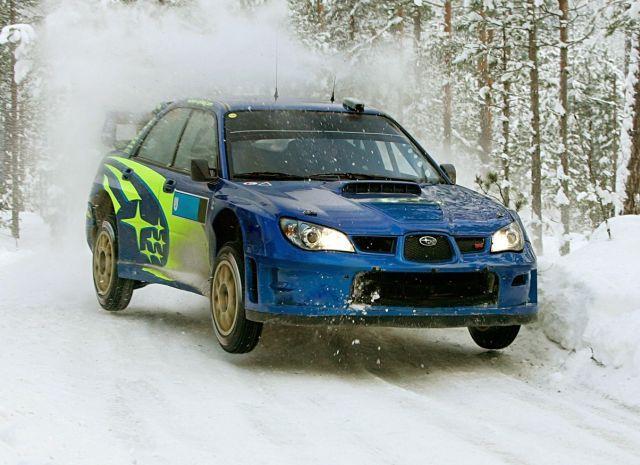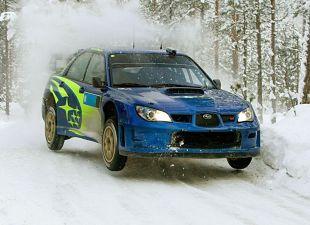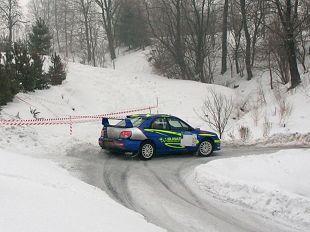
What can a driver learn in winter?
 Have you ever been tempted to apply the handbrake and skid your car into a snowy area? It's not such a stupid idea. - It is useful to know how our car and ourselves will behave in the event of a skid. Thanks to this, in a sudden dangerous traffic situation, we will have a better chance of reacting correctly,” says young racing driver Maciej Dressser.
Have you ever been tempted to apply the handbrake and skid your car into a snowy area? It's not such a stupid idea. - It is useful to know how our car and ourselves will behave in the event of a skid. Thanks to this, in a sudden dangerous traffic situation, we will have a better chance of reacting correctly,” says young racing driver Maciej Dressser.
Losing control of a car while driving is a situation that scares almost every driver. Nothing unusual,  when on a wet, slippery road the car suddenly starts moving in the wrong direction - straight ahead even if you've turned the steering wheel, or sideways even if you're keeping it straight - you can fall off the road. This is a particularly dangerous situation when we are driving at high speed. Then we have a fraction of a second to react. Moreover, for a large group of drivers, despite many years of driving experience, drifts simply did not happen. This, of course, is very good, because one of the most important rules of safe driving is not to fall off the track. The problem, however, is that when such a driver skids, the reaction will be paralyzing stress.
when on a wet, slippery road the car suddenly starts moving in the wrong direction - straight ahead even if you've turned the steering wheel, or sideways even if you're keeping it straight - you can fall off the road. This is a particularly dangerous situation when we are driving at high speed. Then we have a fraction of a second to react. Moreover, for a large group of drivers, despite many years of driving experience, drifts simply did not happen. This, of course, is very good, because one of the most important rules of safe driving is not to fall off the track. The problem, however, is that when such a driver skids, the reaction will be paralyzing stress.
That's why steering champions like young racer Maciej Dressser advise you to check your car and your reactions from time to time.
Winter is the perfect time to safely practice exiting the slide. This is the maneuver we may need the most on a slippery road, says Maciej Drescher.
Where can you slip?
Of course, such fun is absolutely unacceptable on a public road.
“If we drive in violation of traffic rules, we create a danger on the road and, of course, a fine can be imposed,” warns Subcommissioner Miroslav Dybich from the Traffic Department of the Provincial Police Headquarters in Katowice. It adds that there is no ban on intentional skidding on private property. - On a private square, not located in the traffic area, we can work out any maneuver. Of course, at your own peril and risk, - says Deputy People's Commissar Dybich.
So if we have access to a snow-covered, unused field, an abandoned, inactive parking lot, or an airport that is closed in winter, we can work out at least a few maneuvers. Racing tracks (eg in Kielce or Poznań) are also recommended places to learn driving techniques, not just to get out of a skid. The use of the track usually costs around PLN 400, in addition, this cost can be divided between two drivers who will train together. So, what maneuvers can be practiced in winter?
1. Driving in circles
- At the beginning, you can try to drive in a circle, gradually increasing the speed. Even at low speeds, we can see how our car reacts to the addition and admission of gas, or to a sharper braking. How electronic traction control systems react, whether our car tends to oversteer or understeer,” says Maciej Dressser.
If we have a front-wheel drive car, then most likely it will have understeer - when skidding, it will not turn after adding gas, but will continue to go straight. Understeer can also be the result of inertia itself and not necessarily the addition of throttle.
 A rear-wheel-drive car most often reacts by oversteer—when you add throttle in corners, the car begins to lean sideways to the track. This effect is used by drifters who deliberately break the traction by adding gas, sharply turning the steering wheel and additionally pressing the handbrake.
A rear-wheel-drive car most often reacts by oversteer—when you add throttle in corners, the car begins to lean sideways to the track. This effect is used by drifters who deliberately break the traction by adding gas, sharply turning the steering wheel and additionally pressing the handbrake.
An all-wheel drive vehicle most often behaves neutrally. We use the word "most common" because each car is different and how it behaves on the road is determined not only by the drive, but also by many other factors, such as suspension and tires.
2. Slalom on the field
If we have already tried to ride in a circle, we can move on to a more difficult maneuver - slalom. Most drivers don't have traffic cones in their garage, but empty bottles or oil cans will do just fine.
“But don't forget to think of them as real obstacles: trees or poles. We will try to avoid them, as if they could really damage our car, advises Maciej Drescher.
To improve our reflexes, let's run the slalom a few times, slowly at first and then a little faster.
3. Curve driving
If we have a large area, it may also be interesting to travel on a road with a marked left or right turn. During this maneuver, we can accelerate the car a little more (up to about 40-50 km / h) and observe how it behaves in a turn.
4. Turn around in the snow
If your car seems very stable to you, try making a sharp U-turn and a 180-degree turn in the winter yard. You will find that a few square centimeters of thrust with which the car touches the road can easily fail.
5. Harsh braking
Seemingly trivial, but very valuable experience - performing a sudden dynamometric maneuver. Perform this maneuver while moving straight ahead. If the car starts to turn, always try to straighten out the turn.
– The vehicle and tires are designed in such a way that the most effective braking is achieved when driving straight ahead. So if we lose traction in a corner, we have to brake, counter-steer quickly so that the wheels catch that path, if only for a moment. Thanks to this, we will brake faster and more efficiently,” says Maciej Dressser.
If our car is equipped with electronic traction control systems such as ESP or ABS, when learning to brake, we must depress the brake pedal as hard as possible. We will be able to observe how the car reacts and how far it stops.
6. Braking with an obstacle
Another maneuver we can try on slippery surfaces is dodge braking. In cars equipped with ABS and ESP systems, we brake with all our might, going around an obstacle, and do not release the brake. On non-ABS vehicles, release the brake pedal just before turning.
Don't try on the road!
Remember that no amount of simulation on the square will make us a master rudder after a few tries. We perform maneuvers on a snow-covered area at low speeds, with which we rarely leave the roads, especially outside the city.
Rule of thumb for snowy roads and inexperienced drivers: if you don't have to go somewhere, don't go! You will avoid traffic jams and the chances of having an accident or an accident, which is easier in winter.
A skid looks nice and you can impress your girlfriend, but it's definitely not effective. Sure, it's worth having this skill, but it's not worth the risk. If you want to learn how to do it, it's best to try it under the supervision of an experienced person who knows how to do it. Working alone through trial and error can be dangerous and costly.
Although modern technology helps us a lot in driving, we also need to learn how to use systems such as ESP and ABS. It's good to know how they work and they won't do everything for you! Learn how to work with them.

